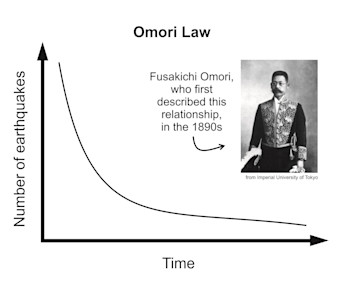
How do we make earthquake forecasts?
This is the second in a three-part series on earthquake forecasting. Next we’ll be sharing why we make earthquake forecasts.
We want to get into the nitty-gritty of our forecast models so pop your ‘science hat’ on for this one.
Most earthquake forecasts are based on what can be scientifically observed or measured. Our earthquake forecasts are robust because not only are they based on 100 years of international observations and measurements, the calculations or ‘models’ that we use to make the forecasts are reviewed and tested by many international scientists.
Our seismologists at GNS Science are part of an international collaboration between New Zealand, Japan, the USA, and Italy where we continuously test each other’s forecast models to see how well they compare to what actually happens, i.e. whether earthquakes happened as forecast in the model. This international review and testing gives us independent insight allowing us to constantly improve our models. It’s also shown us that our forecasts do provide reliable information that can be used to help plan for the future.
We use several different models to create our short, medium and long-term earthquake forecasts. To summarise, we use how earthquakes have interacted in the past to forecast what is likely to happen in the future. We also consider the unique geology and tectonic processes that are occurring in the specific area of New Zealand in the forecast.
Short-term forecasts (days to years)
We use short-term forecast models to forecast aftershocks after large earthquakes (the STEP and ETAS models). They are based on the observation that, in general, the number and magnitude of aftershocks decreases steadily over time – this is called the Omori law.
Every aftershock sequence is different, depending on the geology of the area and the forces in the crust at that location.
At the beginning of an earthquake sequence we apply a version of the Omori law modified to reflect what we know to be average New Zealand aftershock behaviour to then forecast how aftershocks are likely to behave. As the earthquake sequence develops and we get a better understanding of how this particular sequence is behaving, we can make more refined forecasts.
Medium-term forecasts (months to decades)
Our medium-term forecasts use the same models we use to generate our short-term forecasts but we also use a model based on the observation that larger earthquakes can sometimes follow minor earthquakes over a long time period (the EEPAS model).
Long-term forecasts (decades)
Our long-term forecasts use a combination of three different models:
• ‘Background seismicity’ from New Zealand’s National Seismic Hazard Model, which gives the number and size of earthquakes that we would expect in an area under ‘normal’ circumstances, i.e. if there has not just been a large earthquake there.
• Measured shear strain within New Zealand, which are measurements from continuous GPS stations across the country of how much the land is being twisted and stretched in different places because of the movement of our two tectonic plates.
• The pattern of recorded historic earthquakes in New Zealand from 1840 to 1950.
Earthquake forecasting models get complicated pretty quickly. If you would like more detail on the models we use, including the peer-reviewed research papers they are based on, you can check out GNS Science’s earthquake forecast page.
Whatever the forecast, knowing your neighbours and taking a few minutes to work out what you would do with no power, communications or transport for a few days will make a big difference to how you and your community cope after an earthquake or any emergency. There are some great ideas at happens.nz.
Attributable to Dr Matt Gerstenberger Seismologist, GNS Science.


